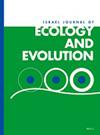Foraging modes of carnivorous plants
IF 0.8
4区 环境科学与生态学
Q3 ECOLOGY
引用次数: 4
Abstract
Carnivorous plants are pure sit-and-wait predators: they remain rooted to a single location and depend on the abundance and movement of their prey to obtain nutrients required for growth and reproduction. Yet carnivorous plants exhibit phenotypically plastic responses to prey availability that parallel those of non-carnivorous plants to changes in light levels or soil-nutrient concentrations. The latter have been considered to be foraging behaviors, but the former have not. Here, I review aspects of foraging theory that can be profitably applied to carnivorous plants considered as sit-and-wait predators. A discussion of different strategies by which carnivorous plants attract, capture, kill, and digest prey, and subsequently acquire nutrients from them suggests that optimal foraging theory can be applied to carnivorous plants as easily as it has been applied to animals. Carnivorous plants can vary their production, placement, and types of traps; switch between capturing nutrients from leaf-derived traps and roots; temporarily activate traps in response to external cues; or cease trap production altogether. Future research on foraging strategies by carnivorous plants will yield new insights into the physiology and ecology of what Darwin called “the most wonderful plants in the world”. At the same time, inclusion of carnivorous plants into models of animal foraging behavior could lead to the development of a more general and taxonomically inclusive foraging theory.食肉植物的觅食方式
食肉植物是纯粹的坐等捕食者:它们扎根于一个地方,依靠猎物的丰富性和移动来获取生长和繁殖所需的营养。然而,食肉植物对猎物可利用性表现出的表型可塑性反应,与非食肉植物对光照水平或土壤养分浓度变化的反应类似。后者被认为是觅食行为,而前者则不是。在这里,我回顾了觅食理论的各个方面,这些方面可以有效地应用于被认为是坐等捕食者的食肉植物。对食肉植物吸引、捕获、杀死、消化猎物并随后从中获取营养的不同策略的讨论表明,最优觅食理论可以像适用于动物一样适用于食肉植物。食肉植物可以改变它们的产量、位置和陷阱类型;在从叶子和根部获取营养之间切换;根据外部提示暂时激活陷阱;或者完全停止生产陷阱。未来对食肉植物觅食策略的研究将对被达尔文称为“世界上最奇妙的植物”的生理学和生态学产生新的见解。同时,将食肉植物纳入动物觅食行为的模型可能会导致一个更普遍和分类上包容的觅食理论的发展。
本文章由计算机程序翻译,如有差异,请以英文原文为准。
求助全文
约1分钟内获得全文
求助全文
来源期刊

Israel Journal of Ecology & Evolution
环境科学-进化生物学
CiteScore
2.10
自引率
0.00%
发文量
7
审稿时长
>36 weeks
期刊介绍:
The Israel Journal of Ecology and Evolution includes high-quality original research and review papers that advance our knowledge and understanding of the function, diversity, abundance, distribution, and evolution of organisms. We give equal consideration to all submissions regardless of geography.
 求助内容:
求助内容: 应助结果提醒方式:
应助结果提醒方式:


